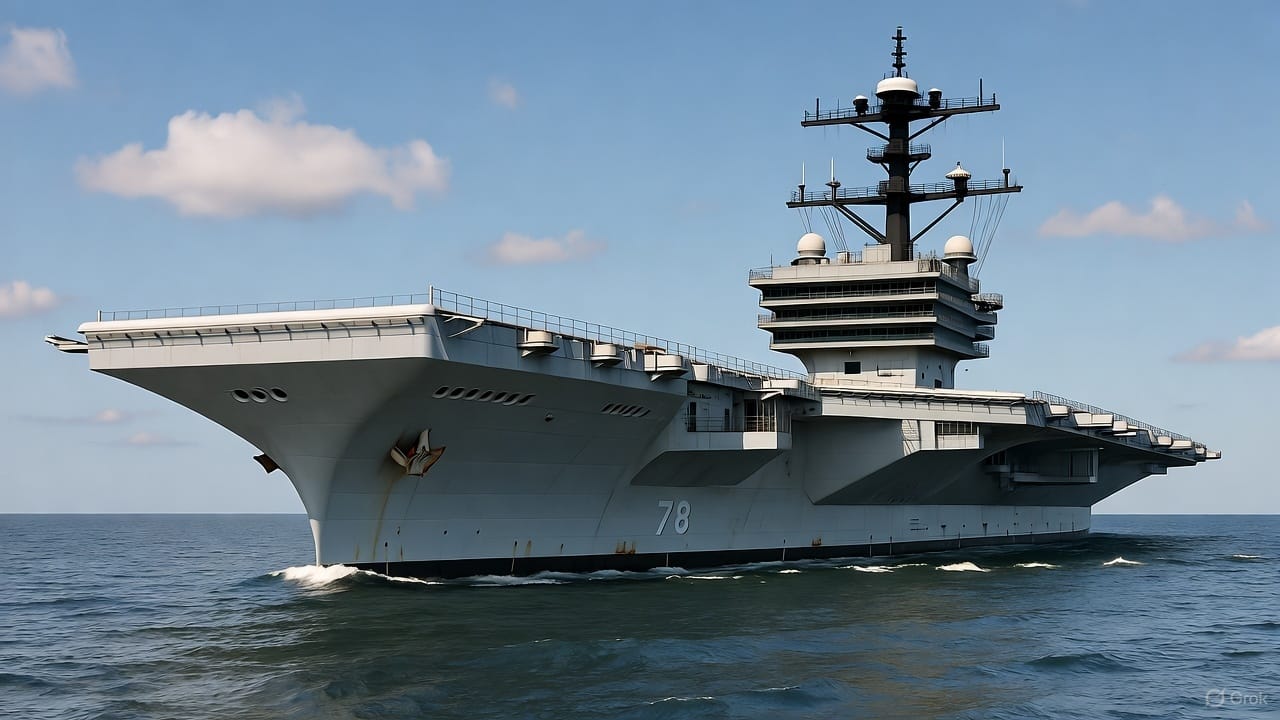- Shortlysts
- Posts
- U.S. Deploys Aircraft Carrier Gerald Ford to the Caribbean Sea
U.S. Deploys Aircraft Carrier Gerald Ford to the Caribbean Sea
U.S. Navy deploys aircraft carrier Gerald Ford to the Caribbean, escalating tensions with Venezuela.

What Happened?
Acting on orders from the Trump Administration, the U.S. Navy deployed the Gerald Ford, the largest aircraft carrier in the world, to the Caribbean Sea last week. The deployment of the Gerald Ford carrier strike includes over ninety combat aircraft capable of carrying out surveillance and attacks against targets inside Venezuela.
The aircraft carrier deployment comes on the heels of at least ten drone strikes in the Caribbean Sea against alleged drug vessels. U.S. President Donald Trump has accused Venezuelan President Maduro of being the leader of a drug-trafficking organization, which Mr. Maduro has denied.
Why it Matters
The deployment of the Gerald Ford marks an escalation in the growing tensions between the United States and Venezuela. Aircraft carriers give the U.S. the ability to project power far from American shores, but the movement of the carrier strike group to the Caribbean doesn’t mean the U.S. is committed irreversibly to attacking Venezuela.
Carrier groups are often deployed as a show of force, which is designed to intimidate or convince the intended audience to change their behavior. In this case, the Gerald Ford’s presence in international waters near Venezuela is likely intended to put pressure on Venezuelan President Maduro, with the goal of either forcing him to resign or change his regime's behavior when it comes to illicit drug trafficking. Sometimes the threat of force is enough to elicit changes.
While American intelligence and law enforcement agencies say they have considerable evidence that the Maduro regime is engaged in illegal drug trafficking, they have not made that information public. Most likely the reason why is because disclosing their intelligence would compromise sources and methods, potentially putting American lives in danger. There is also plenty of open-source intelligence suggesting the Maduro regime is involved in drug trafficking, but none of it is ironclad.
The presence of the Gerald Ford in the Caribbean does give the U.S. an increase in the amount of firepower available for any potential military operations against targets inside Venezuela itself. While drone strikes have already hit several alleged drug vessels, the combat aircraft on the Gerald Ford can carry bigger weapons, meaning they can destroy targets that would be too big for drone strikes to eliminate.
How it Affects You
Because carriers can stay in a region almost indefinitely, they give the U.S. a double tool by providing a sustained show of force and the capability to launch full-scale attacks at any time. Venezuela does have Russian-made anti-ship missiles, which could be fired at U.S. Navy ships should they conduct operations against targets inside Venezuela.
Though war is not yet certain, the U.S. now has enough firepower in place to begin combat operations against Venezuela should that course of action be chosen by the Trump Administration.